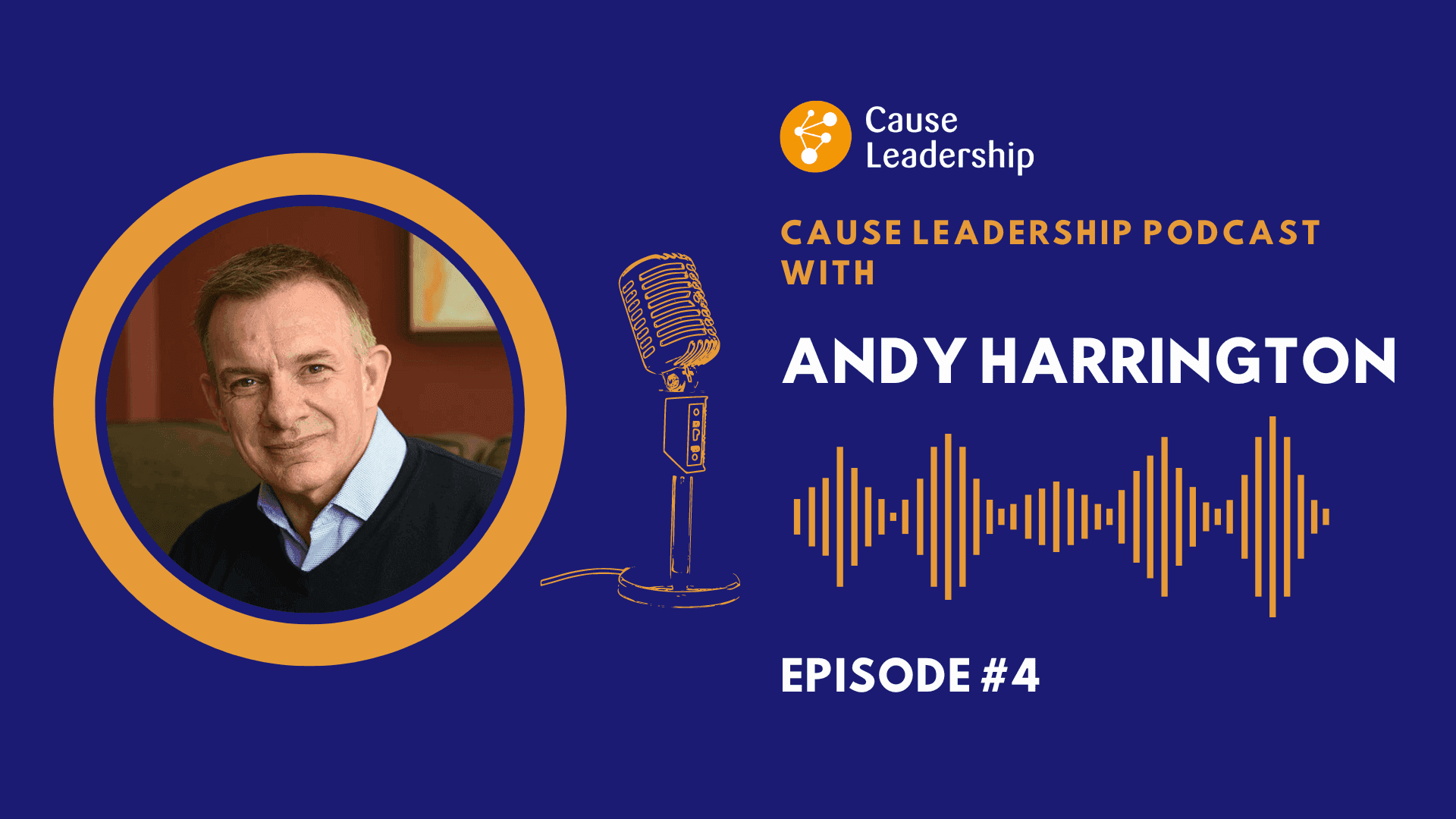How to Supercharge Your Job Search for Charity Executive Roles
Navigating a job search for a charity executive role requires more than updating your resume and sending out applications. The nonprofit sector is mission-driven, values-focused, and relationship-based, which means that standing out goes beyond simply listing accomplishments. Whether you’re a seasoned nonprofit leader or a private sector professional transitioning into purpose-driven work, a strategic approach is essential.
In this comprehensive guide, you’ll learn practical, step-by-step tactics to elevate your candidacy in the charitable sector—from resume rewrites and LinkedIn makeovers to leveraging AI tools like ChatGPT. By the end, you’ll be better equipped to land the right leadership role and drive impact through your work.
Reference our previous blog post, Top 9 Executive Recruitment Firms for Nonprofit Leaders in Canada.
1. Resume Rewrite to Highlight Skills in the Charitable Sector
 Too many candidates use resumes built for the corporate world. That won’t cut it in the nonprofit space. Charity boards and hiring managers want to see more than bottom-line results—they want to understand how you lead with purpose.
Too many candidates use resumes built for the corporate world. That won’t cut it in the nonprofit space. Charity boards and hiring managers want to see more than bottom-line results—they want to understand how you lead with purpose.
A strong charity executive resume should:
- Emphasize mission alignment. Start with a profile summary that showcases your values and leadership approach. Reflect on how your experiences contribute to social impact.
- Quantify results in context. Metrics matter, but context is king. Instead of “Grew donor base by 25%,” try: “Expanded recurring donor base by 25% through community-centred engagement in underserved regions.”
- Highlight stakeholder relationships. Showcase experience working with diverse groups: boards, donors, staff, volunteers, and government stakeholders.
- Include governance and compliance experience. Detail your involvement with audits, CRA compliance, board reporting, and risk management.
- Tailor for each job posting. Use the language and priorities of each job description. Mirror the terminology they use: “social enterprise,” “faith-informed leadership,” “systems change,” etc.
Tip: Use AI to brainstorm bullet points, generate powerful action verbs, or compare multiple versions of your resume. However, always infuse it with your unique story and voice.
For help with tailoring your resume for the nonprofit sector, check out CharityVillage’s Job Seeker Guides.
2. Cover Letter Creation: Tell Your Story
 Your cover letter is your opportunity to humanize your leadership journey. It shouldn’t rehash your resume, but instead answer key questions: Who are you? What drives you? Why this role and organization?
Your cover letter is your opportunity to humanize your leadership journey. It shouldn’t rehash your resume, but instead answer key questions: Who are you? What drives you? Why this role and organization?
Structure it with:
- A personalized opening that connects your values to the organization’s mission.
- A narrative arc that shows how your leadership journey aligns with the organization’s current needs.
- A “why now” and “why us” paragraph that shows research and passion.
- A high-impact example of transformational leadership or crisis management that demonstrates your readiness.
- A strong, values-forward closing paragraph and an invitation to connect.
Avoid cliches and generalizations. Instead, reflect depth:
“My leadership in mental health advocacy stems from personal experience navigating care systems with my family. That personal lens now fuels my strategic focus as I guide organizations to deliver compassionate, community-informed services.”
Cover letters often go unread unless they’re compelling. Make yours memorable, authentic, and tailored to each organization.
3. LinkedIn Profile Optimization
 LinkedIn is the nonprofit sector’s digital handshake. An optimized profile boosts visibility and credibility, especially when many executive search firms start sourcing on the platform.
LinkedIn is the nonprofit sector’s digital handshake. An optimized profile boosts visibility and credibility, especially when many executive search firms start sourcing on the platform.
What to update:
- Headline: Use more than just your job title. Include key skills and values: “Charity CEO | Trauma-Informed Leader | Indigenous Health Advocate.”
- About Section: Think of this as your leadership bio. Highlight career themes, cross-sector experiences, and key results. Focus on voice: tell your story like you’re speaking to a board.
- Experience: Add achievements under each role that reflect strategy, mission delivery, and stakeholder leadership.
- Volunteer Work: This builds credibility. Add board positions, advisory roles, and cause involvement.
- Skills: Include sector-specific terms like “Program Evaluation,” “Donor Stewardship,” “Governance,” or “Community Engagement.”
- Recommendations: Ask for 2-3 written references. Encourage colleagues, board members, or collaborators to write from different angles.
Pro Tip: ChatGPT can help you draft a compelling About section, summarize long experiences, or refine your impact statements—but always infuse it with your values and style.
You can also register for job alerts here with Cause Leadership to stay informed about relevant opportunities. Also, check out this LinkedIn non-profit CEO jobs page and the CharityVillage job board for nonprofit executive jobs across Canada.
4. Interview Preparation: Confidence with Compassion
 In nonprofit executive interviews, boards and panels often explore emotional intelligence, values alignment, and adaptive leadership more than technical expertise.
In nonprofit executive interviews, boards and panels often explore emotional intelligence, values alignment, and adaptive leadership more than technical expertise.
Prepare to Speak on:
- Leadership during uncertainty: Talk about navigating funding cuts, team transitions, or major organizational shifts.
- Mission-centric decisions: Share examples of times when you made hard decisions to protect the mission or organizational integrity.
- Board relations: How do you balance governance, accountability, and partnership?
- Equity and inclusion: Be ready to discuss how you lead inclusively and create cultures of belonging.
Use the STAR method (Situation, Task, Action, Result) to answer behaviour-based questions, but always circle back to mission impact.
You might also face values-based questions such as:
- “How do you approach community consultation before implementing new programs?”
- “Describe a time when your values were challenged in a leadership role.”
AI Can Help You Rehearse
Use ChatGPT to:
- Generate mock interview questions based on the job posting.
- Simulate a panel interview.
- Test the clarity and structure of your answers.
Confidence comes from preparation, but authenticity is the key to an interview.
5. Job Search Strategy: Build a Pipeline, Not Just Applications
 The most successful candidates treat job searching like strategic outreach rather than endless resume submissions.
The most successful candidates treat job searching like strategic outreach rather than endless resume submissions.
Build Your Search Plan:
- Define your mission match. What causes are important to you? What kind of leadership challenges excite you?
- Create a shortlist of organizations. Target 10-15 nonprofits you admire. Watch their job boards, social feeds, and newsletters.
- Use a system. Track applications, networking follow-ups, deadlines, and interviews. Tools like Airtable or even Excel can help.
- Prioritize warm leads. Referrals, introductions, or recruiter contacts often lead to faster results than cold applications.
- Schedule weekly activity blocks. Set time aside for networking, application tailoring, and interview prep.
Be Visible:
- Attend virtual nonprofit leadership events.
- Contribute insights on LinkedIn or sector forums.
- Write or share articles on governance, fundraising, or your area of impact.
Be intentional. Be consistent. Be patient. Executive searches often take longer than other roles—sometimes 3-6 months or more.
For regional job search strategies or Ontario-specific opportunities, check out the Connect Nonprofit Jobs – Ontario Nonprofit Network.
6. Networking Message: Authentic and Aligned
 Don’t treat networking as transactional. In the charitable sector, relationships lead to roles.
Don’t treat networking as transactional. In the charitable sector, relationships lead to roles.
Here’s a framework for your outreach:
- Warm introduction: Mention mutual connections, shared interests, or admiration for their work.
- Brief context: Share that you’re exploring new leadership roles in the sector.
- Respectful ask: Invite a short conversation or ask for insights, not a job.
Sample LinkedIn Message:
Hi [Name], I admire your leadership with [Organization] and the innovative approach to [specific initiative]. I’m currently exploring new executive opportunities in the charitable sector and would love to learn more about your journey. Let me know if you’d be open to a quick call.
Sample Email to a Recruiter:
Dear [Recruiter], I’m reaching out as a seasoned nonprofit leader with 15 years of experience in community health and cross-sector partnerships. I’m actively exploring my next executive opportunity and admire Cause Leadership’s commitment to faith-based and impact-driven organizations. I’d love to connect for a potential future fit.
Stay warm and relational. Your sincerity will set you apart.
7. AI-Powered Support: Use It Strategically
 AI tools like ChatGPT can elevate your search with speed, clarity, and inspiration. Used well, they can:
AI tools like ChatGPT can elevate your search with speed, clarity, and inspiration. Used well, they can:
Support You With:
- Resume and bullet point generation
- Customized cover letters for different organizations
- Mock interview practice
- Job posting analysis (“What are the key skills and themes in this job description?”)
- Networking message drafting
- Personal mission statements or executive bios
But here’s the golden rule: AI is your co-pilot, not your replacement.
Use it to spark ideas, refine clarity, or break through writer’s block—but always edit the output to ensure it reflects your authentic experience and voice.
See NonprofitReady.org for free training courses to enhance your nonprofit digital skills.
8. Additional Tips for Charity Executive Job Seekers
- Stay current. Read Imagine Canada, Charity Village, and sector-specific publications.
- Know your compensation expectations. Understand salary ranges in your region and the size of the organization.
- Prepare a leadership philosophy. Boards love hearing how you approach culture, decision-making, and change.
- Join peer cohorts or masterminds. These spaces offer valuable support, insight, and access to networking opportunities.
- Invest in coaching. A leadership or transition coach can help you refine messaging, stay accountable, and navigate offers.
Think like a systems leader, not a job seeker.
Questions & Answers @ Job Search for Charity Executive Roles
Q: How long should my resume be for an executive role?
A: Two pages is ideal. Focus on high-level leadership experience, measurable outcomes, and your strategic contributions. Avoid long lists of tactical duties.
Q: What’s the best way to talk about fundraising experience?
A: Use numbers and context. Instead of “Responsible for fundraising,” say, “Led donor stewardship and annual campaign strategy that increased revenue from $1.2M to $2.1M over three years.”
Q: Can I apply for a charity executive role if I’ve been in the private sector?
A: Absolutely. Emphasize mission alignment, transferable skills, and any relevant volunteer or board experience. Be ready to speak to the differences in culture, pace, and stakeholder dynamics.
Q: What if I don’t know anyone in the nonprofit I want to apply to?
A: Research the organization deeply. Reference specific programs, reports, or values in your cover letter. Reach out to someone on LinkedIn with a short message to learn more.
Q: How do I explain leaving a role due to burnout or conflict?
A: Keep it honest and forward-looking. Focus on what you learned, how you grew, and why you’re ready for this next opportunity. Avoid bitterness or blame.
Q: How do I work with a recruiter like Cause Leadership?
A: Register in their candidate network, follow their postings, and build a relationship. Recruiters remember proactive, well-positioned candidates who show a strong values fit.
Take the Next Step with Cause Leadership
If you’re ready to find your meaningful work in the nonprofit sector, Cause Leadership is here to help empower your job search for executive nonprofit roles.
We specialize in executive recruitment for Canadian charities—from faith-based missions and shelters to national and international impact organizations. Our team understands the nuances of leadership in the charitable sector and connects mission-driven leaders to roles where they can thrive.
➡ Join one of our candidate networks today. Check out our job board.
Let us know what kind of opportunities you’re seeking, and we’ll help open the right doors.
___________
Jim Foster is the Chief Operating Officer of the leadership consulting firm Cause Leadership Inc. Jim co-directs a team that has successfully placed and consulted many senior-level leaders for the last 20+ years with a broad spectrum of groups, including many charitable and non-profit organizations. Jim also serves leaders as an ICF-certified executive coach.
(AI tools were used to prepare and verify the research for this article.)


